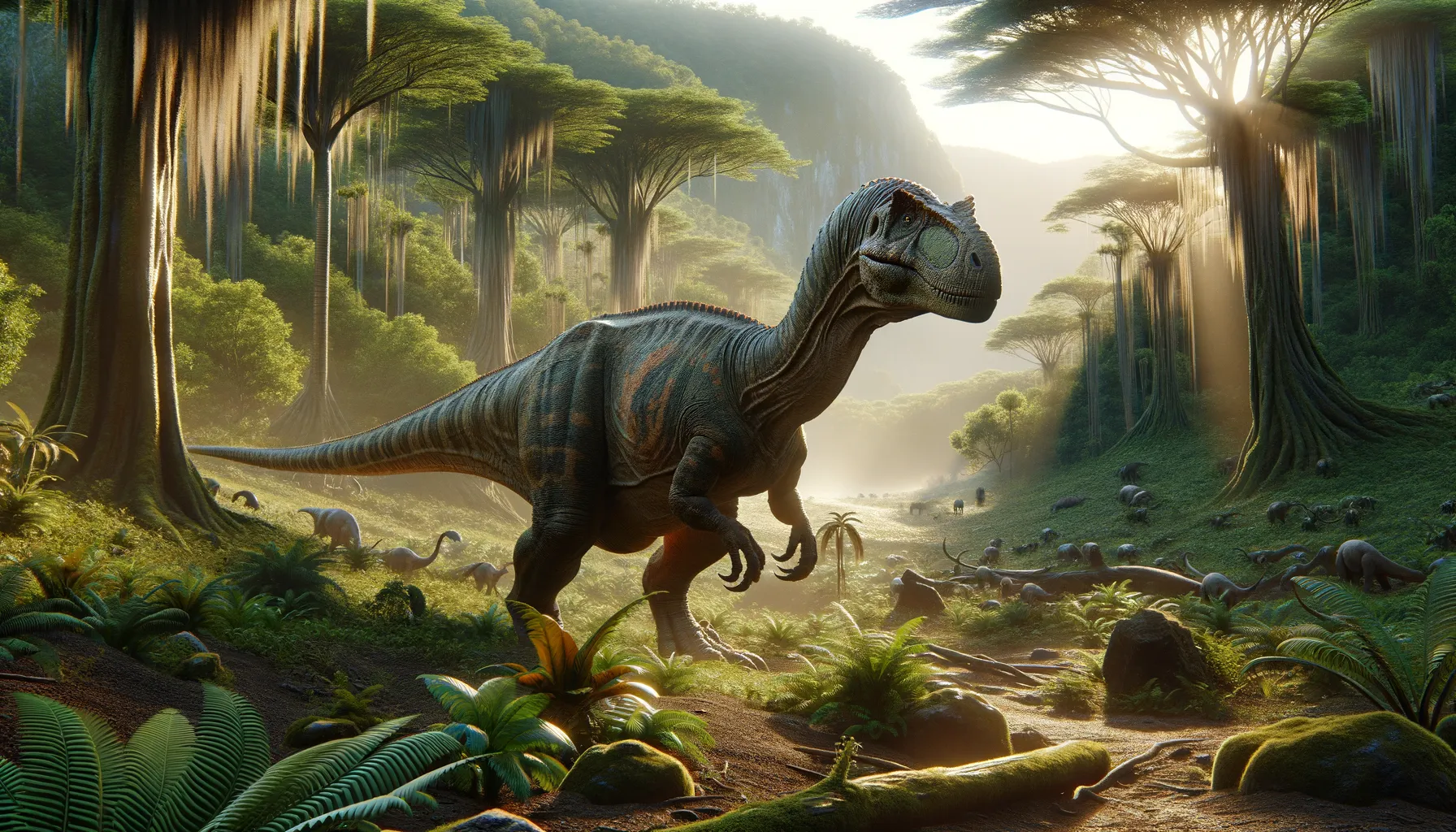
Rocasaurus
A titan of the past, grounded yet majestic.
Period
Cretaceous
Length
Roughly 8 meters in length.
Height
Approximately 5 meters tall.
Weight
Estimated to weigh around 10,000 kilograms.
Rocasaurus was a sauropod dinosaur that inhabited South America during the Late Cretaceous period. Known for its long neck and hefty body, Rocasaurus was one of the smaller members of the titanosaurs. Despite its size, it played a crucial role in its ecosystem, thriving in lush environments filled with diverse flora. Fossil evidence provides remarkable insights into its life, revealing aspects of its behavior and ecology.
Diet
Rocasaurus was herbivorous, primarily consuming plants, leaves, and possibly even fruits. Its long neck allowed it to reach high vegetation, providing it access to food sources unavailable to many other herbivores.
Hunting
As a plant eater, Rocasaurus did not hunt but foraged for plants. It used its height advantage to access treetops and shrubs, indicating a browsing feeding strategy.
Environmental challenges
Rocasaurus faced challenges from predators, primarily large carnivorous dinosaurs. Adaptations like its size and potential herd behavior may have helped it defend itself. Climate fluctuations during the Cretaceous could have impacted its food supply, influencing its migration patterns. Competition for resources with other herbivorous dinosaurs was another significant challenge.
Speed
Rocasaurus was likely a slow-moving dinosaur.
Lifespan
Rocasaurus might have lived up to 50 years.
First discovery
The first Rocasaurus fossil was discovered in Argentina in 2000.
Fun Facts
- Rocasaurus was a small sauropod dinosaur that lived during the Late Cretaceous period.
- It was discovered in what is now Argentina, making it a part of the rich South American dinosaur fossil record.
- Unlike many of its giant sauropod relatives, Rocasaurus was relatively small, estimated to be about 8 meters long.
- Rocasaurus is believed to have had a long neck, which would have helped it reach leaves high in trees for feeding.
- The name 'Rocasaurus' means 'rock lizard,' named after the region where its fossils were found, which is rocky and rugged.
- Rocasaurus is considered to be closely related to another sauropod, Saltasaurus, which also lived in the same area.
- Its discovery helped paleontologists understand more about the diversity of sauropods in South America during its time.
Growth and Development
Rocasaurus grew rapidly in its juvenile stages, a common trait in large dinosaurs. This fast growth helped them reach sizes that predators found challenging to tackle. Evidence suggests that young Rocasaurus might have stayed together for protection against predators. They reached full maturity within the first two decades of their life.
Habitat
Rocasaurus roamed the floodplains and forests of modern-day South America. Its habitat was richly vegetated, providing ample food resources. This environment supported a diverse mix of herbivorous and carnivorous dinosaurs, coexisting in a complex ecosystem.
Interaction with other species
Rocasaurus likely coexisted peacefully with other herbivorous dinosaurs, sharing resources. It may have engaged in social behaviors like group foraging or migration to new feeding grounds. Interaction with carnivores was likely rare and primarily defensive, aiming to avoid encounters with threats.
Natural lifespan
Rocasaurus had a natural lifespan of several decades, potentially reaching 50 years.
Reproduction
Rocasaurus reproduced through egg-laying, likely in communal nesting grounds to increase hatchling survival rates. The eggs were carefully buried, possibly in vegetation or sand, to maintain a stable temperature. Young Rocasaurus would stay near the hatchling sites until growing robust enough to fend for themselves.
Social behaviour
Rocasaurus might have exhibited social behavior, living in herds that provided safety and social interaction. These herds could communicate using vocalizations or body language for coordination during movement and foraging. Cooperation within the group ensured better resource sharing and predator avoidance.
Fossil locations
Fossils of Rocasaurus have been primarily found in the Neuquén Province of Argentina. The excavation sites have helped paleontologists uncover vital information about South American dinosaurs' biodiversity. These discoveries have contributed significantly to understanding sauropod distribution and ecology during the Late Cretaceous period.
